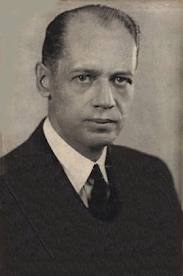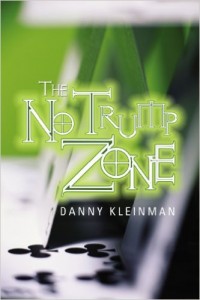Source: The Notrump Zone By Danny Kleinman

Bridge pioneer Ely Culbertson once said, ‘The logical place for notrump bidding is after information has been exchanged as to suit lengths and distribution’: In a long 1937 World Championship match, no member of his team ever opened 1NT.
Outlandish as Culbertson’s statement sounds to our modern ears, it wasn’t stupid. For 1NT is preemptive in the broad sense of taking up bidding space, shutting out all bids at the one-level. That’s not a good idea when you have a good hand with opening-bid strength and (depending on partner’s hand) may belong in any of the four suits. Prior to the development of Stayman and other conventional responses, Culbertson was close to being right.
However, there are several reasons for opening in notrump.
1) Share the load. It’s a waste and a shame never to open 1NT (the fifth-lowest bid) at all. If you remove 1NT from your opening-bid repertoire, you burden your other opening bids more heavily. Then, too, your 1NT rebids will have to cover wider ranges.
2) Notrumpish values. Sometimes you have a notrumpish hand. By this I don’t mean 4-3-3-3 distribution, which is bad distribution even for notrump (though worse for suit play). A notrumpish hand, as I see it, is not only a balanced hand but a hand that is richer in lower honors than higher and contains holdings that can use protection against leads through them. In a tournament nearly forty years ago, I played three hands in 3NT despite having a 9-card major-suit fit with my partner. Each produced a top, for I took as many tricks in notrump as others took in 4![]() or 4
or 4![]() . I was bidding on intuition, but when I asked myself what feature those three hands had in common, the answer struck me: three queens. In a way, that’s no mystery at all. Queens are third-round controls, often destined to be ruffed in suit contracts. With few queens, your side will often need to do some ruffing. With many queens, however, you seldom need to ruff to win the third trick in a suit. Thus the Rule of Three Queens: with three queens, go out of your way to play notrump.
. I was bidding on intuition, but when I asked myself what feature those three hands had in common, the answer struck me: three queens. In a way, that’s no mystery at all. Queens are third-round controls, often destined to be ruffed in suit contracts. With few queens, your side will often need to do some ruffing. With many queens, however, you seldom need to ruff to win the third trick in a suit. Thus the Rule of Three Queens: with three queens, go out of your way to play notrump.
3) No good suit. No suit opening may be appealing. This is especially true for the many modern bridge players who have been taught never to open four-card majors, but it was true even in the heyday of Culbertson and Charles Goren, when four-card major openings were commonplace. Suppose you are a sensible middle-of-the-mad bidder, preferring to have five cards for a 1![]() or 1
or 1![]() opening but willing to open a strong four-card major when you have a convenient rebid and no other suit appeals. What else but a notrump opening looks right with either of these hands?
opening but willing to open a strong four-card major when you have a convenient rebid and no other suit appeals. What else but a notrump opening looks right with either of these hands?

A 1![]() opening with the second is revolting; a 1
opening with the second is revolting; a 1![]() opening with the first, though permissible, is hardly desirable.
opening with the first, though permissible, is hardly desirable.
4) Tweeners. The ‘strong notrump range (for purposes of our discussion, 16 to 18 high-card points) is a trouble range unless you have a good suit or good distribution. If you open in a suit, you may never get the chance to show your extra strength at all. If partner responds, you may not be strong enough to make a forcing jump rebid, and you may have to hope that you get a third turn in which to show your extras. Worse still, if the opponents bid but your partner passes, it may be too dangerous for you to bid again. With balanced 19-HCP hands, you can usually bid again safely. With balanced 15-HCP hands (or worse), you won’t mind selling out to the opponents. A strong 1NT opening paints a good rough picture of your hand early.
TWO VIEWS OF POINT-COUNT
But before proceeding further, I must digress to discuss point-count. Bridge teachers and writers alike usually teach their students to ‘count’ high-card points without explaining what high-card points are. There are two definitions:
1) The simple arithmetic count: an ace = 4 HCP, a king = 3, a queen = 2, a jack = 1
2) A measure of high-card strength in which 10 represents an average hand.
Simple arithmetic may be good enough for third-graders, but for adult bridge players the relevant question is, ‘How strong is my hand?’ Unfortunately, too many adults are still in the third grade as far as bridge is concerned. Once, playing in a field where mine was the only partnership playing a 16-18 notrump (all the others were playing 15-17), I held a hand as dealer that was something like
![]()
It looked like 16 HCP to me, not 14, so I opened 1NT. No one else did. A few diehard four-card majorites opened 1![]() , but the rest opened 1
, but the rest opened 1![]() . That seemed crazy, as they don’t hesitate to open 1NT on:
. That seemed crazy, as they don’t hesitate to open 1NT on:
![]()
a hand that is not nearly as good as mine. If you rate my hand as 14 HCP and this one as 15, then you are using definition (1). If you rate my hand as a good 16 HCP and the other example as a bad 14, then you are using definition (2). Now examine:
![]()
and decide on your call as dealer at matchpoints with favorable vulnerability, using each of the following notrump ranges: 15-17, 12-14 and 10-12.
Here are my answers: pass, pass, and pass. If you counted this hand as 12, go back to the third grade. If you counted it as 9, you’re on my wavelength. If you counted it as 71/2, I admire you (even though I disagree), for you were probably using Edgar Kaplan’s ‘Four C’s’ formula (found in the October 1982 Bridge World). Kaplan was a superb judge of bridge hands as well as an excellent analyst and writer, but he carried the downgrading of queen-jack combinations to an extreme. He was a firm believer in aces and kings, the main source of Quick Tricks. That was the basis for his supposed 11-14 weak notrump range: his ’11-point’ notrump always included 2 1/2 Quick Tricks. His minimum was really 12, with a +1 adjustment to the ‘4-3-2-1’ point-count for 2 1/2 Quick Tricks. He would never have opened 1NT, as I saw a player who claimed to playing Kaplan-Sheinwold do not long ago, with:
![]()
I have said that lower honors come into their own at notrump, so why do I (though not to the degree that Kaplan did) downgrade queens and jacks and upgrade aces for the purposes of opening in notrump? Very simply, because not all hands that are opened in notrump are destined to be played in notrump. A 1NT opening should deliver a narrow range of value in support of partner’s suit or on defense against an opposing suit contract.
WEAK, STRONG OR KAMIKAZE ONE NOTRUMP?
So, if we look at the four reasons for opening 1NT that I listed earlier, what do they tell us about the type of hands on which we should open 1NT? Do they sug-gest playing a strong notrump (somewhere in the 15+ range), a weak notrump (in the 11-15 range), or even a Kamikaze (10-12) notrump?
Reason (4), Tweeners, argues for playing a strong notrump.
Reason (3), No good suit, argues for the weak notrump (minimum opening-bid strength), for the weaker the hand, the more likely it is that none of its suits will be appealing. Let’s look at those example hands again:

With the first, I wouldn’t mind terribly if my system compelled me to open 1![]() , but with the second I would hate it if my system compelled me to open 1
, but with the second I would hate it if my system compelled me to open 1![]() . A 17-HCP hand is much more likely to contain a decent 3-card minor or a strong four-card major than a 14-HCP hand. Reason (2), Notrumpish values, weighs in for the strong notrump, for the more high cards a hand has, the more likely it is to have some queens and jacks. Reason (1), Share the load, tilts toward the weak notrump, for hands in the 13-to-15 HCP range occur much more frequently than hands in the 16-to-18 HCP range. Yet it also argues strongly against the Kamikaze (10-12 HCP) notrump, for now all balanced genuine opening-strength hands must be opened in suits unless they are strong enough for 2NT.
. A 17-HCP hand is much more likely to contain a decent 3-card minor or a strong four-card major than a 14-HCP hand. Reason (2), Notrumpish values, weighs in for the strong notrump, for the more high cards a hand has, the more likely it is to have some queens and jacks. Reason (1), Share the load, tilts toward the weak notrump, for hands in the 13-to-15 HCP range occur much more frequently than hands in the 16-to-18 HCP range. Yet it also argues strongly against the Kamikaze (10-12 HCP) notrump, for now all balanced genuine opening-strength hands must be opened in suits unless they are strong enough for 2NT.
THE KAMIKAZE NOTRUMP
However, a case can be made for the Kamikaze notrump. It is simultaneously pre-emptive and descriptive; that puts you ahead of the game on most of the deals where you use it. Suppose your counterpart at another table isn’t playing the Kamikaze notrump; he will probably pass. His LHO may be able to open, while your LHO may not have the values to enter the auction. If your LHO does enter, he’ll be doing so at a higher level, with more risk, and less bidding space in which to conduct a cooperative auction. If your LHO passes, your partner will know much more about your hand and thus be better placed than the partner of your counterpart who hears only passes (or perhaps an opening bid on his right). The downside to the Kamikaze Notrump is that when the opponents do enter, they may be able to play their contracts exceptionally well because they know approximate-ly what you have. This is true even when you don’t open — you are known not to hold a balanced 10-12, and that may help place high cards in your partner’s hand.
